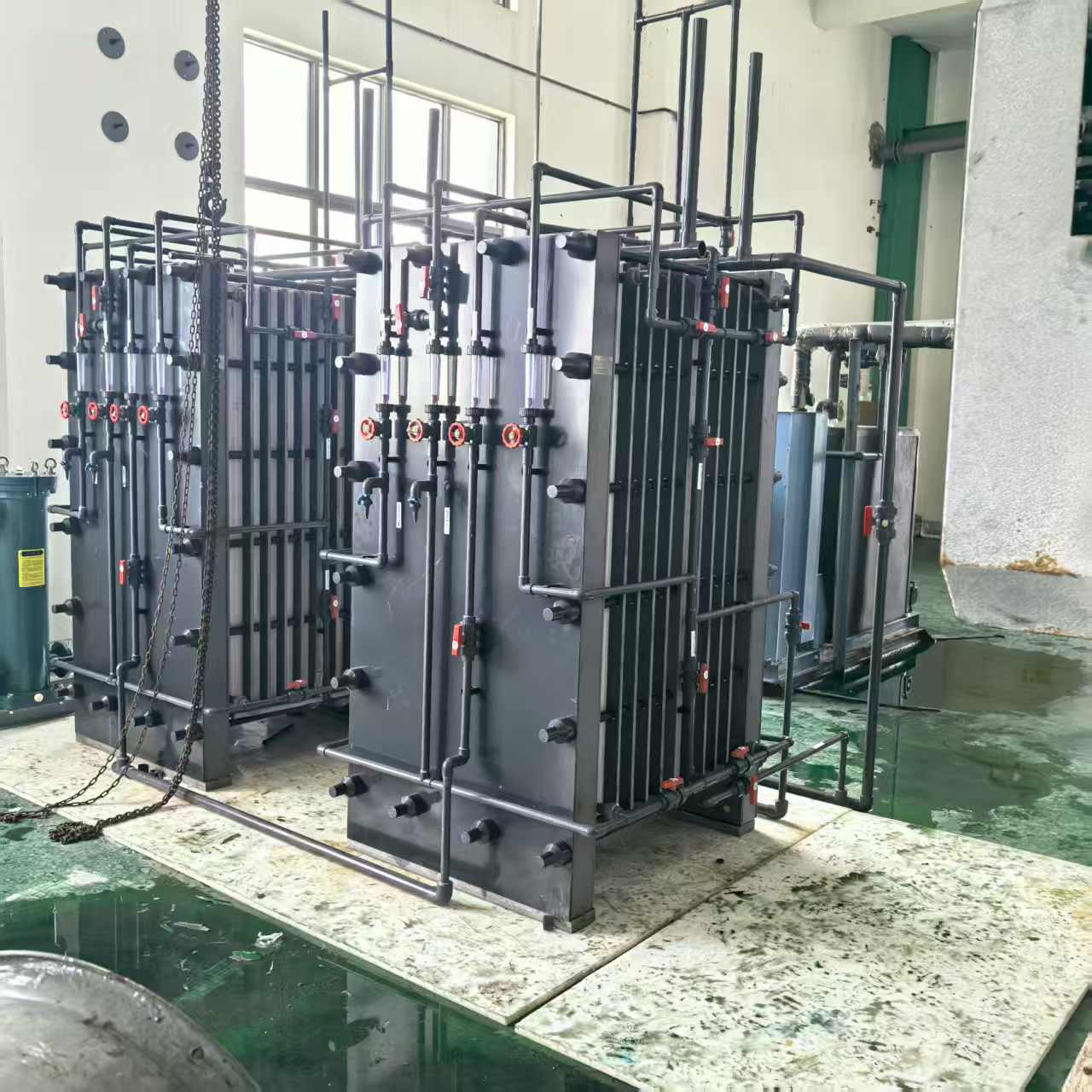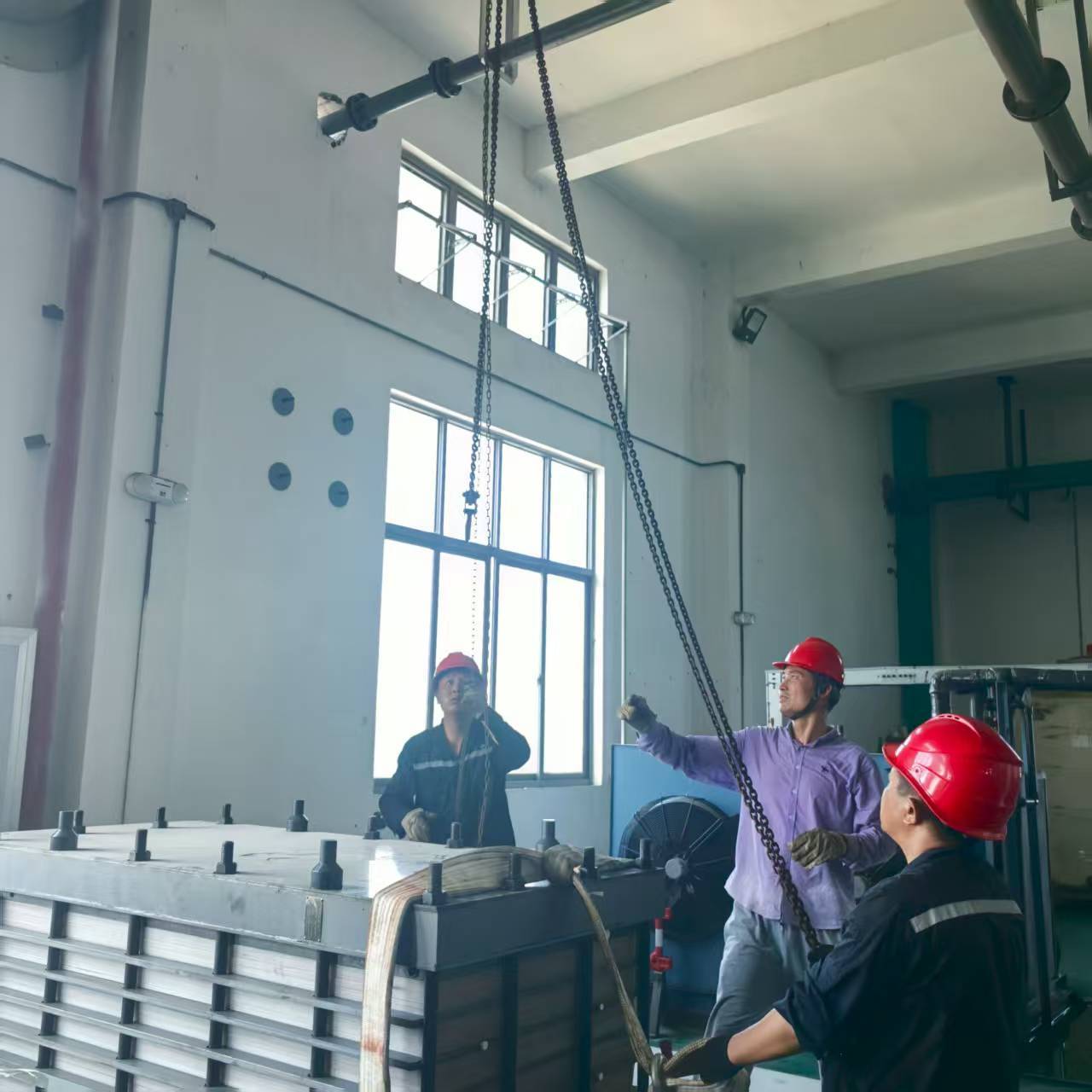31
2025
-
07
Membrane separation: A new breakthrough in green technology for the recovery of waste alkali from desizing in Textile printing and dyeing and waste acid from electronic etching
Author:
I. Textile/Printing and Dyeing Industry: Membrane separation technology drives innovation in the recovery of NaOH from desizing wastewater
In the pretreatment process of cotton fabric printing and dyeing, desizing is a key step to remove the sizing agent on the surface of the yarn, and caustic soda (NaOH) is the core auxiliary agent in the alkali desizing process. The desizing wastewater produced by this process is strongly alkaline (pH value 12-14), containing a large amount of unreacted NaOH, slurry decomposition products and cellulose debris. The traditional treatment method is to adjust the pH value through acid neutralization, which not only consumes a large amount of sulfuric acid or hydrochloric acid, but also generates high-salt wastewater, increasing the burden of subsequent biochemical treatment. The application of membrane chromatography technology provides a breakthrough solution for the resource utilization of NaOH. The technical principle and advantages of membrane chromatography technology: By taking advantage of the selective permeability of cation exchange membranes (cation membranes), the separation of Na⁺ and OH⁻ is achieved under the drive of concentration differences. The surface of the cation membrane is negatively charged, allowing Na⁺ to pass through while repelled negatively charged slurry decomposition products (such as carboxylate ions) and macromolecular impurities. The Na⁺ in the stock solution chamber migrates towards the recovery chamber, while the H⁺ in the recovery chamber diffuses in the reverse direction to the stock solution chamber and combines with OH⁻ to form water. Ultimately, the recovery chamber can obtain high-purity NaOH solution (with a concentration of up to 70% - 85% of the original solution), which can be directly reused in the desizing process. The raw liquid chamber forms low-alkali wastewater containing slurry residue, which can be discharged up to standard after further biochemical treatment.


Technical challenges and optimization directions
Membrane fouling control: Suspended solids in desizing wastewater (such as cellulose) are prone to clogging membrane pores, leading to a decrease in flux. By integrating double-layer filtration (with an accuracy of ≤5μm) or ultrafiltration pretreatment, over 90% of suspended solids can be removed, extending the membrane's service life to more than two years.
2. Enhanced separation efficiency: The adoption of gradient pore structure cation membranes can increase the migration rate of Na⁺, raising the recovery rate from 70% to over 85%. Meanwhile, optimizing the flow channel design (such as using helical wound membrane modules) can enhance the mass transfer efficiency and shorten the processing cycle.
3. Integrated process development: Build a full process of "pretreatment - membrane chromatography - evaporation concentration", which can achieve gradient recovery of NaOH: Membrane chromatography recovers low-concentration alkaline solution (5% - 10%), and then further purify it to 20% - 30% through evaporation concentration to meet the needs of different sections. Ii. Electronics Industry: Membrane chromatography technology Opens up a green path for the recovery of acid components in etching Waste liquid. In the manufacturing of electronic devices such as semiconductors and display panels, wet etching is the core process for forming micro-nano structures, and commonly used etching agents include hydrofluoric acid (HF) and phosphoric acid (H₃PO₄). The waste liquid produced by this process contains high concentrations of acid (5% - 20%) and metal ions (such as Si⁴⁺, Al³⁺, Cu²⁺). Direct discharge will cause acidification of water bodies and heavy metal pollution. Membrane chromatography technology, with its advantages of low energy consumption and high selectivity, has become an ideal choice for the recovery of acid components.
1. HF system: Anion exchange membranes (anion membranes) are used, whose positively charged membrane surfaces allow F⁻ to pass through while repelled positively charged metal ions (such as Si⁴⁺). Driven by the concentration difference, F⁻ in the stock solution chamber migrates towards the recovery chamber, while OH⁻ in the recovery chamber diffuses in the reverse direction to the stock solution chamber and combines with H⁺ to form water. Ultimately, the recovery chamber can obtain high-purity HF solution (with a concentration of up to 80% - 90% of the original solution), which can be directly reused in the etching process. In the stock liquid chamber, residual liquid containing metal salts is formed. Through chemical precipitation or ion exchange, metals can be further recovered.
2. H₃PO₄ system: The anion membrane allows PO₄³⁻ to pass through while blocking metal ions (such as Al³⁺). By optimizing the membrane pore size (0.5-1nm), efficient separation of PO₄³⁻ and Al³⁺ can be achieved, with a recovery rate of over 85%. The recovered H₃PO₄ can be directly used for aluminum etching or phosphating treatment.
Technical bottlenecks and innovation directions
1. Membrane material modification: Traditional anion membranes are prone to hydrolysis and degradation under strong acid (pH<1) or high temperature (>60℃) conditions. By introducing fluorinated or sulfonated groups, acid-resistant anion films can be developed, raising the operating temperature to 80℃ and extending the service life to more than three years.
2. Coupled process development: By combining membrane dialysis with bipolar membrane electrodialysis, an integrated process of "acid concentration - metal recovery" can be achieved. For instance, the dilute HF (5%) recovered by membrane dialysis is further concentrated to 20% through bipolar membrane electrodialysis, while generating OH⁻ to neutralize the residual liquid, achieving zero discharge.
3. Intelligent control system integration: By introducing online concentration sensors and flow control valves, the concentration difference on both sides of the membrane can be monitored in real time, and operation parameters (such as flow rate and temperature) can be dynamically optimized to keep the acid recovery rate stable at over 90%.
Iii. Industry Prospects: From Technological Breakthroughs to Industrial Innovation With the tightening of global resource recycling policies and the advancement of the "dual carbon" goals, the application prospects of membrane analysis technology in the textile/printing and dyeing and electronics industries are extremely broad. According to market forecasts, by 2030, the global textile waste liquid treatment market size is expected to exceed 8 billion US dollars, among which the proportion of membrane analysis technology is likely to exceed 25%. The market for etching waste liquid treatment in the electronics industry will grow at an annual rate of 12%, and membrane chromatography will become the core recycling method. From a technical perspective, the research and development of new membrane materials (such as amphoteric ion-exchange membranes and photocatalytic self-cleaning membranes) will further expand the application scope of membrane chromatography. At the industrial level, through collaborative innovation with industries such as hydrometallurgy and electrochemical deposition, cross-disciplinary resource utilization solutions can be formed. For instance, the NaOH recovered from the textile industry can be used for the mercerization treatment of electronic glass, and the HF recovered from the electronics industry can be used for the etching of aluminum materials, achieving cross-industry resource circulation.
Membrane chromatography technology, driven by concentration differences, has achieved efficient recovery of NaOH from textile desizing wastewater and acid components from electronic etching waste liquid through molecular-level separation. Its low energy consumption, high selectivity and environmental friendliness meet the urgent needs of the industry's green transformation. In the future, with the deep integration of membrane materials science and process engineering, membrane analysis is expected to evolve from a single technology to an integrated and intelligent direction, contributing wisdom to global resource recycling and sustainable development.
Related Products
Membrane separation: A new breakthrough in green technology for the recovery of waste alkali from desizing in Textile printing and dyeing and waste acid from electronic etching
2025-07-31
Explore the application of bipolar membrane technology in citric acid production
2025-07-30
Desalination, separation and concentration of L-carnitine feed solution project: Electrodialysis solution
2025-07-28
Lanmeila sedimentation Tank: An innovative solution for efficient solid-liquid separation
2025-07-25
Huanke Environmental Protection Technology
HOTLINE:
Address:Optoelectronic Industry Accelerator in Weifang Hi-Tech Zone, Shandong Province, China
Contact:Zhang Gong
WhatsApp:+8619953608211
Email:eco.eqpt@gmail.com


Consult

TikTok
Copyright © 2023 Shandong Huanke Environmental Protection Technology Co., Ltd
